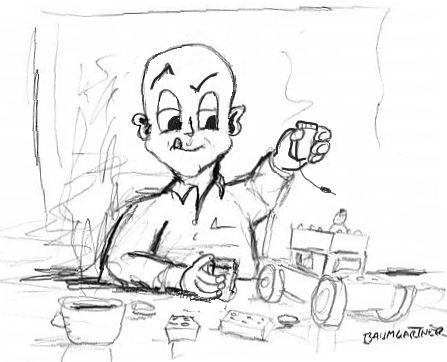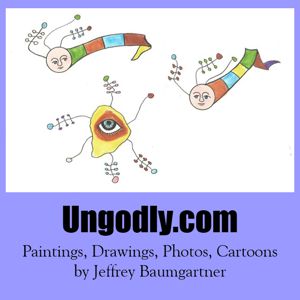
Six Techniques to Get Great Ideas from Your Team
The thing about brainstorming, idea management and other business tools for collecting ideas is that they are artificial processes that attempt to induce creativity on groups and, as such, acknowledge a simple fact: the office is a terrible place for having and developing ideas!
Think about it. The company in which you work is very likely the result of a creative idea. But that creative idea almost certainly did not spring from a brainstorm session in which your founders (or perhaps you) sat down in an office meeting room, generated 100 creative business ideas, voted for the best idea and built a business out of it. Real creativity simply does not happen like that.
Think about how many great business ideas were first jotted down on the back of a beer coaster -- then think about how often you see beer coasters in office conference rooms! The truth is, when a group of people leave your office, go to a cafe and relax over a drink, they are almost inevitably far more creative than they will ever be at their work desks.
There are two reasons why people are more creative in pubs than in their offices. Firstly, when people are at a pub (or cafe), drinking and joking around, they do not generate ideas. Rather they play with ideas. And removed from the intellectual confines of most offices, they take such ideas much further than they would dare to do at work. Secondly, when people drink a small amount of alcohol, or even when they simply relax and allow their minds to wander, their dorsolateral prefrontal regions (what I like to call their inner bureaucrats) become less active. Since this is the part of the brain that regulates thought and prevents you from developing and sharing crazy, potentially embarrassing ideas, the result is boosted creativity through reduced inhibition.
This is all find and good, but if you are a manager in charge of innovation, it is in your interests to facilitate such creative thinking at work where ideas can be captured and developed by your business. Moreover, and let's be honest here, you want to be sure your superiors recognise that it is you and not the pub down the road that is encouraging your colleagues' creativity!
So, how can you enable your innovation team to be more naturally
creative at work? There are a few things you can do.
Get the Hell Out of the Office!
When I do anticonventional thinking (ACT) workshops or facilitate ACT sessions, one of the key recommendations I make is to hold the event outside of the office. I always see better results when participants are not in an office conference room.
When you need to get people to come up with and develop ideas, get the team out of the office. Perhaps taking the team for a beer would not be appropriate and in some cultures, it would be unacceptable. But there are other things you can do.
Visit a location relevant to your customers and how they use your product. Does your company make industrial cleaning products? Then visit a filthy factory one day, explore and discuss. Do you make pharmaceuticals? Go for a coffee in a hospital canteen or in a waiting room.
Alternatively, visit a location completely irrelevant to your customers and how they use your product. Sit around a picnic table in a national park, enjoy the view and talk about your division's goals. Or, go to a library, select random books, read their summaries and discuss how they might be applicable to your business.
Do something inspirational. Watch a film about a hero overcoming great odds. Then discuss how your company could emulate the hero's action. Or discuss how you could help your customers could emulate that hero. Visit an art gallery or a museum. Then have a meeting in the cafe.
Have a walking meeting in which you and the team walk and talk.
This is not only inspirational, but it is good for the health as well!
Play
When questioned about creativity, most creative people will eventually talk about the importance of play. John Cleese, a member of the Monty Python comedy group and a very creative man, summed it up nicely in a talk for Video Arts some years ago. (You can see the video here and read the transcript here)
The connection between natural creativity and play is important -- indeed, in English another word for play is "recreation" which literally means to create again.
I believe you will find that if you can get a group of people to play with ideas, they will be far more creative than if you induce them to generate ideas. Once you have generated an idea, it sits there on a list or in a database, static, bored and lonely. If you play with an idea, you can push it around, try it out in various ways and change it. It becomes dynamic and flexible.
Of course, this raises the question of how you can get a team
of serious hard-working colleagues to let loose and play with ideas. Firstly,
and as we've already discussed, get them out of the office! Once you have done
that, there are a few things you can do to encourage play. Incidentally, these
activities will work to some extent in the office, especially if you have informal
spaces for groups to meet and be creative; but getting out of the office is
better.
Role Play
Since many executives and aspiring executives are uncomfortable about doing something as childish as playing with colleagues, the best thing you can do is change your colleagues --and yourself -- into other people. Role play is a great way to do this. It is a method I use frequently in workshops and in facilitation.
Instead of trying to solve a problem as yourselves, create a role play that looks at the problem from a different perspective. You do this by dividing a group into pairs of small teams or even individuals. You give both team shared instructions and then give each team separate, secret instructions that they cannot share with the other team. The purpose of the secret instructions is to create a conflict of interests.
For example, imagine that your company manufactures a consumer product widely available in many different shops around the country. You are looking for ideas on how to improve the product. Rather than the predictable brainstorm, try this.
You have two teams, A and B, each with two people. Explain to both teams that team A is a pair of customers who are returning one of your products to the shop where they bought it. They want to get their money back. Team B is the customer service staff at the shop. Now, give team A a piece of paper that explains, "In fact, you are perfectly happy with the product. However, another shop has [name of competing product] on sale for half of what you have paid for your purchase. You want to return it, get the money and buy the other product. However, you need to convince the customer service person that the product you bought is not satisfactory so that she will accept the return."
Team B gets a sheet of paper saying, "Your shop is struggling in the weak economy and the general manager has announced that customer service staff should try harder to convince customers not to return products unless those products are faulty. Worse, the shop is laying off staff and you fear for your job. Do whatever it takes to convince this customer to keep your product."
Give the teams a few minutes to discuss the roles and their strategy and then let them act. They will soon get lost in the roles and the conflicting situations are likely to cause a few laughs, which help establish a relaxed atmosphere.
Once the role play comes to a conclusion, which may be an inability to come to a conclusion, talk about the role play. Ask everyone about what surprised them, how they felt about it and what they have learned that could translate into product improvements. In some instances, you may identify issues that do not require product improvements so much as emphasising existing features better in marketing communications materials.
With a bit of creativity, you can come up with a role play to
deal with just about any innovation issue. However, for the best results, bring
in a facilitator with experience organising role plays.
Toys
Another great way to get people to play is to give them toys, of course. For example, you can buy a lot of Lego building bricks (or similar building toy or craft supplies such as cardboard, coloured paper, styrofoam, tape, glue and the like). Divide your group into smaller teams of about five each and instruct each team to use the materials to build a prototype of how they think your product will look, feel and work in the year 2024.
If interaction with people is an issue, you can buy some dolls, such as Barbie dolls, to represent people. Other toys, such as cars, trucks, tools and most consumer items can be bought in toy form.
Afterwards talk about the dream products and what features might be implemented sooner.
This kind of idea development has the advantage that everyone
in the team can work simultaneously (unlike in an ideation session where people
have to listen to others before speaking). It can also be useful with multinational
teams in which some members are less fluent in the shared language than
others.
Irrelevant Stuff
One last, but surprisingly powerful, thing you can do with your innovation teams is simply to discuss a goal for which you need creative ideas. The next day, do something totally irrelevant together. Take a small boat trip, go on a hike, take a group dance lesson. The one thing you should not do during this activity is talk about work. Indeed, make it a rule that there is to be no discussion about work. If that is not possible, give people 10 minutes before the activity to discuss work. Thereafter, such talk is to be strictly forbidden.
Participating in activities like these, without work being at
the top of everyone's mind, will allow the mind to wander. A day or three after
the activity, have a meeting to discuss again the goal and ideas people have.
You will likely be surprised by the suggestions you hear. This is because you
have given your team members a chance to let their minds wander by doing something
unrelated to work and by forbidding discussion of work. You have also given
them new input unrelated to work. This is food for the creative mind.
Respect Personal Time
Because these activities involve playing, doing fun things and being away from the office, it may be tempting to do them outside of working hours. Fight this temptation. Your innovation team members need downtime for their personal lives, their families and other responsibilities. Taking that time from them, in order to be creative, will not motivate them to work harder for you and it will not help with creativity. Rather, it is likely to cause bad feelings which tend to reduce collaboration and creativity. Instead, use work time for this collaborative, playful, creative thinking.
It may not seem like work. Play can and does result in creative ideas that result in profitable innovation. And that should be your goal as an innovation leader!
And if your boss has a problem with this, tell her to get in touch with me!
My Usual Self-Promotional Bit
If you would like to try some of these activities with your team, I can facilitate them for you. Get in touch and let's talk about all the fun we can have helping your team and organisation innovate better!




